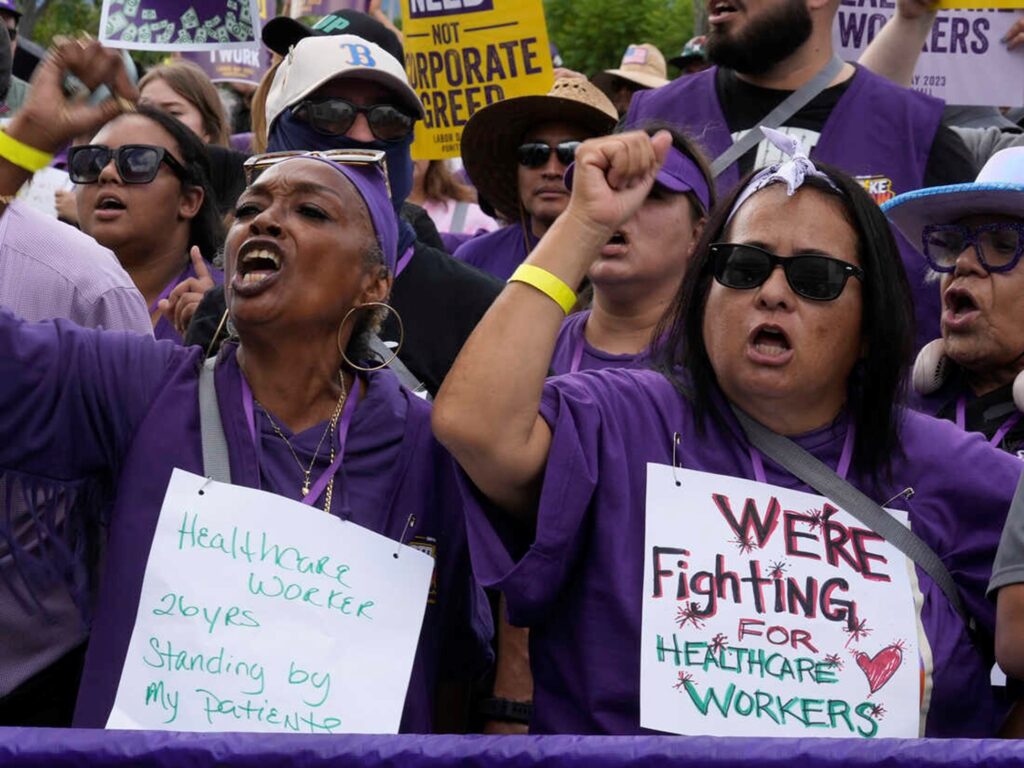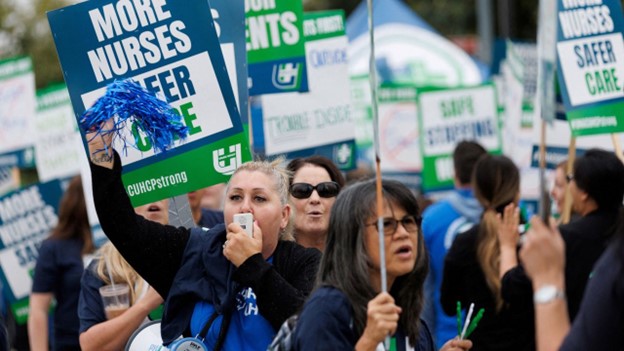On Wednesday, over 75,000 unionized employees of Kaiser Permanente, a major not-for-profit healthcare provider, embarked on the largest healthcare worker strike in the history of the United States. This unprecedented event involves workers in several states and underscores the growing labor movement in the wake of the pandemic. Employees from various fields are united in their demand for improved staffing, safer working conditions, and fair compensation.
The Historic Strike
The strike, initiated by a coalition of eight unions representing 40% of Kaiser Permanente’s workforce, spans California, Colorado, Washington, Virginia, Oregon, and Washington, DC. Starting at 6 am local time, it is expected to last until Saturday morning. This labor action takes place amid increased labor unrest across various industries and reflects the specific challenges faced by healthcare workers, who are dealing with staff shortages and increased pressure in the post-pandemic era.
The striking workers include a diverse group, such as nurses, dietary staff, receptionists, optometrists, and pharmacists. Their decision to strike came after union contracts expired on September 30, with negotiations extending into the eleventh hour but failing to prevent the walkout. This strike also marks the involvement of workers in Virginia and Washington DC, despite most of these facilities not operating 24/7.
Kaiser’s Response

Kaiser Permanente expressed optimism about reaching an agreement before the strike but failed to do so. The strike is temporary, and the employees are expected to return to work on October 7. However, a “longer, stronger” strike in November is possible if negotiations remain deadlocked.
The employees’ primary concerns revolve around staffing shortages leading to burnout. Kaiser Permanente has committed to hiring 10,000 new union-represented workers by the end of 2023. The union coalition is demanding higher pay, protection against outsourcing, and more notice when remote workers are called back to in-person work. While some progress has been made in negotiations, differences persist, especially regarding wage increases. Kaiser Permanente offered location-dependent wage hikes, which the coalition rejected, demanding a 6.5% raise in the contract’s first two years and a 5.75% raise in the next two years.
Patient Care During the Strike

Kaiser Permanente’s unique membership-based model means that patients pay dues for access to its services. While most doctors and registered nurses aren’t part of the strike, some non-emergency and elective services may be rescheduled during the work stoppage. Kaiser Permanente assures that its hospitals and emergency departments will remain open and staffed during the strike, even with the use of contingent workers if necessary.
This multi-state strike is taking place during a period of heightened labor activity in the US. Large-scale strikes, such as those by the United Auto Workers and entertainment industry workers, have disrupted multiple sectors. The healthcare industry has witnessed a surge in strike activity. The Bureau of Labor Statistics reported that a third of the 42 major work stoppages in 2022 through August involved healthcare workers. These actions stem from the challenges posed by staffing shortages and worker burnout, like the concerns voiced by Kaiser Permanente employees.
The Kaiser Permanente workers’ strike is emblematic of the broader labor movement unfolding in the US, reflecting the ongoing struggles of workers, especially healthcare workers, for better working conditions, fair compensation, and protection against outsourcing. As negotiations continue, the impact of this historic strike remains to be seen, but it undoubtedly highlights the pressing issues faced by healthcare workers in the post-pandemic world.